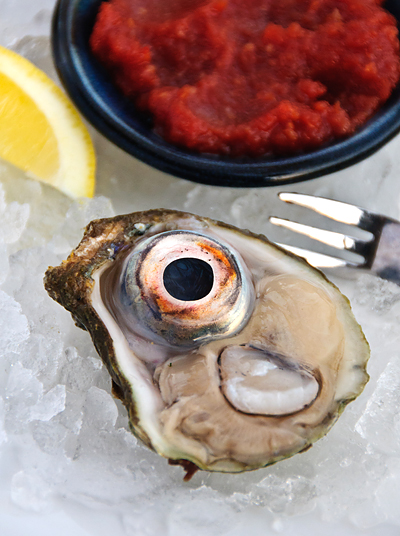Mom, Apple Pie and Shad Roe

In this amazing, ever-changing fresh seafood business that we’re in, there is always something new, exciting, and delicious coming into season. The bounties of spring are upon us! Soft shell crabs, Pacific salmon, trap caught Rhode Island squid and porgy, Great Lakes fish abound, just to mention a few! This week’s fish of the moment though, has really spelled spring for the past 400 years. Shad and its rich, nutty roe! The American or Atlantic Shad is the largest member of the Herring family and their range is from New Foundland to Florida. They’re anadromous and like salmon, they live in the sea and spawn in fresh water river systems.
Water temperature triggers spawning. The Florida run starts in January and moves north as the water warms. By February, shad are running in Georgia and the Carolinas and come spring, we see the next big river runs. These include the Potomac, Susquehanna, Delaware, Hudson and of course, the Connecticut River, which is the source of the beautiful sets we’re getting into the market now.
The shad are truly a great American fish with a long and rich history. Native Americans celebrated the departure of winter with huge feasts in which shad were planked and roasted over an open fire, or alternatively, dried for future use.
The early settlers learned fishing techniques from the natives such as rock crib traps and brush nets. The settlers also salted and dried shad that would help to sustain them for the rest of the year. Even George Washington was a commercial shad fisherman! In 1771 he is said to have caught, in a single season, 7,760 fish! During the revolutionary war shad was an important ration for Washington’s continental army. Supposedly it was the spring shad that nourished the starving troops at Valley Forge. Author John McPhee goes into great detail of the importance of this fish in our history in his fantastic book, The Founding Fish. McPhee, like Washington, a Delaware River shad fishing nut is full of interesting stories as well as recipes.
The Latin species name for shad is Sapidissima, which means “most delicious” or “most savory.” There’s no question of how tasty this fish is. Being a herring, they have plenty of good fat with a buttery texture, making them rich and flavorful. The only downside of the shad is the two rows of “Y ” bones running through the fillet. The herringbone pattern it creates can certainly be a bit bothersome even for the most seasoned of fish lovers. However, the fish is too tasty to let a few bones get in your way and with a bit of skill and practice these fillets can be boned out. A few old masters still exist who can quickly bone a fillet, but I just take my time and deal with them.
Additionally, shad are very high in heart healthy Omega 3 fatty acids and very low in toxins like PCB’s, dioxins and mercury. You’d think that such fatty fish that are caught in rivers are no longer known as “pristine” and would have problems with contaminates. But because they spend most of their lives in the deep sea and are mainly plankton eaters, they are quite clean. There are many recipes, new and old, for preparing shad and shad roe but one of my favorite springtime meals is a basin broiled shad fillet with a plump set of roe sautéed in clarified butter with lemon and bacon on the side. Bacon is a traditional accompaniment because the smoky saltiness compliments the nutty sweet flavor of the roe.
There is quite a cult following for the roe. If it’s cooked properly, it’s a taste that you’ll look forward to all winter long. To enjoy something that is so fleeting that we savor it only one time a year is just precious. It seems we’ve become too accustomed to having anything we want from anywhere in the world right now! So enjoy shad and shad roe while it’s in season, the only way it should be. They’re here now (call the market to order). Savor the moment!








